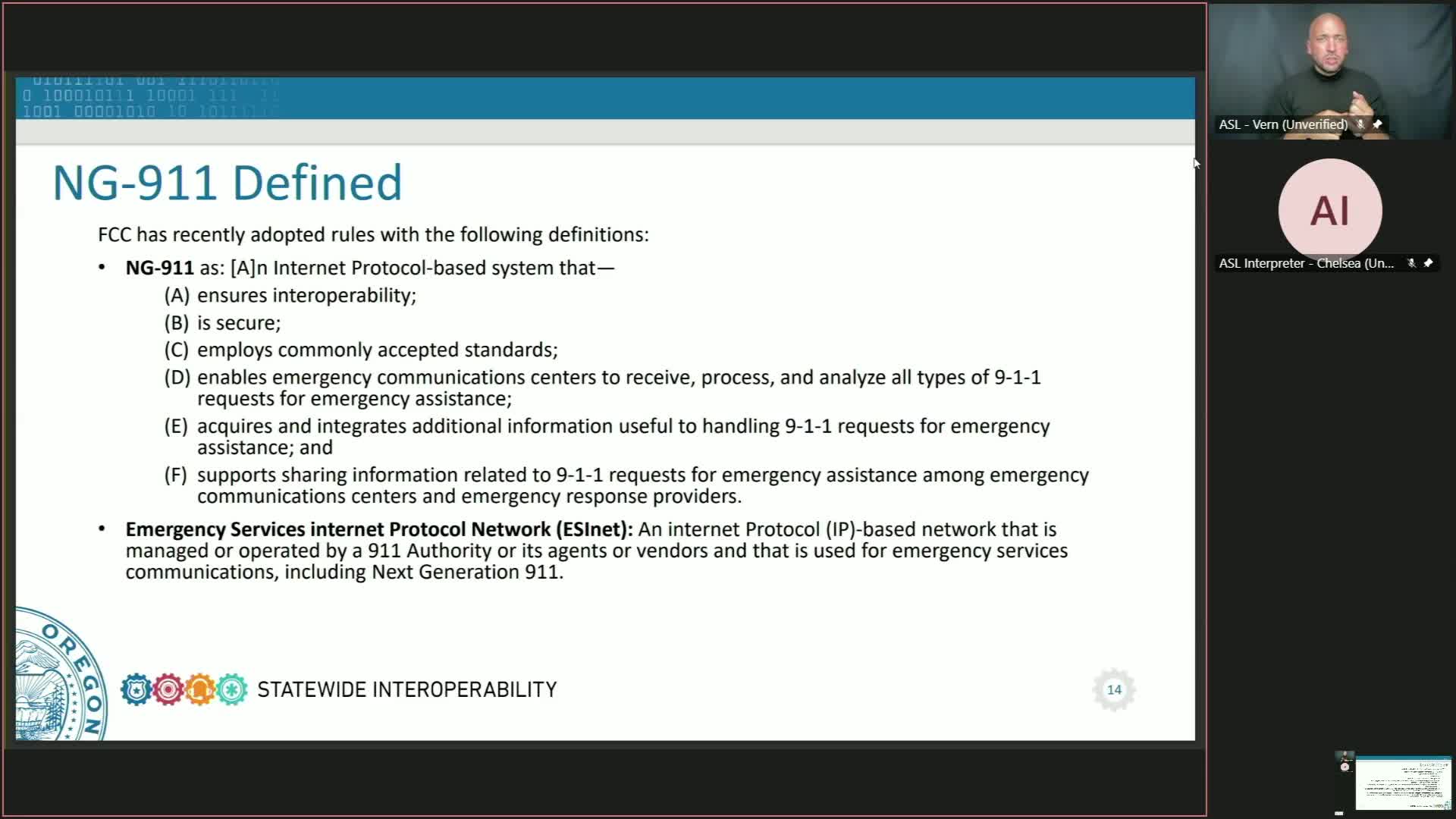Oregon's Emergency Management implements new NG 911 system for improved response accuracy
March 28, 2025 | Information Management and Technology, Joint, Committees, Legislative, Oregon
This article was created by AI summarizing key points discussed. AI makes mistakes, so for full details and context, please refer to the video of the full meeting. Please report any errors so we can fix them. Report an error »

In a pivotal meeting of the Joint Committee on Information Management and Technology, Oregon lawmakers gathered to discuss the future of emergency response systems, particularly the transition to Next Generation 911 (NG 911). The atmosphere was charged with anticipation as committee members explored how advancements in technology could revolutionize the way emergency services operate.
The discussion highlighted the significant shift from traditional analog phone lines to a fully digital system, which promises to integrate various forms of communication, including live video and text messaging, into emergency response protocols. This transition is not merely a technical upgrade; it represents a fundamental change in how emergency calls are processed and responded to. The Department of Emergency Management currently oversees the 911 program, but as the infrastructure evolves, the coordination of this ecosystem will become increasingly crucial.
A key point of the meeting was the recent adoption of new Federal Communications Commission (FCC) rules that define NG 911 and the Emergency Services Internet Protocol Network (ESINET). These definitions are vital for ensuring that emergency communication centers can effectively receive and analyze diverse types of requests for assistance, ranging from traditional voice calls to automated alerts from vehicles.
Committee members raised important questions about the implications of these changes for everyday citizens. Representative Flynn expressed concerns about the accuracy of location tracking when dialing 911 from mobile devices. Currently, the system relies on approximations based on cell tower locations, which can lead to delays in dispatching help. However, the future promises a more precise system that utilizes GPS data and contextual information from nearby devices, enhancing the ability of first responders to locate individuals in need of assistance.
As the conversation unfolded, it became clear that the integration of advanced technology into emergency services is not just about improving response times; it is about saving lives. The committee emphasized the importance of interoperability among various systems and the need for standardized protocols to ensure that all components work seamlessly together.
In conclusion, the meeting underscored a transformative moment for Oregon's emergency response framework. With the deployment of NG 911 on the horizon, the state is poised to enhance public safety through improved communication and data sharing. As lawmakers continue to navigate these changes, the focus remains on creating a system that not only meets the needs of today but is also adaptable for the challenges of tomorrow.
The discussion highlighted the significant shift from traditional analog phone lines to a fully digital system, which promises to integrate various forms of communication, including live video and text messaging, into emergency response protocols. This transition is not merely a technical upgrade; it represents a fundamental change in how emergency calls are processed and responded to. The Department of Emergency Management currently oversees the 911 program, but as the infrastructure evolves, the coordination of this ecosystem will become increasingly crucial.
A key point of the meeting was the recent adoption of new Federal Communications Commission (FCC) rules that define NG 911 and the Emergency Services Internet Protocol Network (ESINET). These definitions are vital for ensuring that emergency communication centers can effectively receive and analyze diverse types of requests for assistance, ranging from traditional voice calls to automated alerts from vehicles.
Committee members raised important questions about the implications of these changes for everyday citizens. Representative Flynn expressed concerns about the accuracy of location tracking when dialing 911 from mobile devices. Currently, the system relies on approximations based on cell tower locations, which can lead to delays in dispatching help. However, the future promises a more precise system that utilizes GPS data and contextual information from nearby devices, enhancing the ability of first responders to locate individuals in need of assistance.
As the conversation unfolded, it became clear that the integration of advanced technology into emergency services is not just about improving response times; it is about saving lives. The committee emphasized the importance of interoperability among various systems and the need for standardized protocols to ensure that all components work seamlessly together.
In conclusion, the meeting underscored a transformative moment for Oregon's emergency response framework. With the deployment of NG 911 on the horizon, the state is poised to enhance public safety through improved communication and data sharing. As lawmakers continue to navigate these changes, the focus remains on creating a system that not only meets the needs of today but is also adaptable for the challenges of tomorrow.
View full meeting
This article is based on a recent meeting—watch the full video and explore the complete transcript for deeper insights into the discussion.
View full meeting
